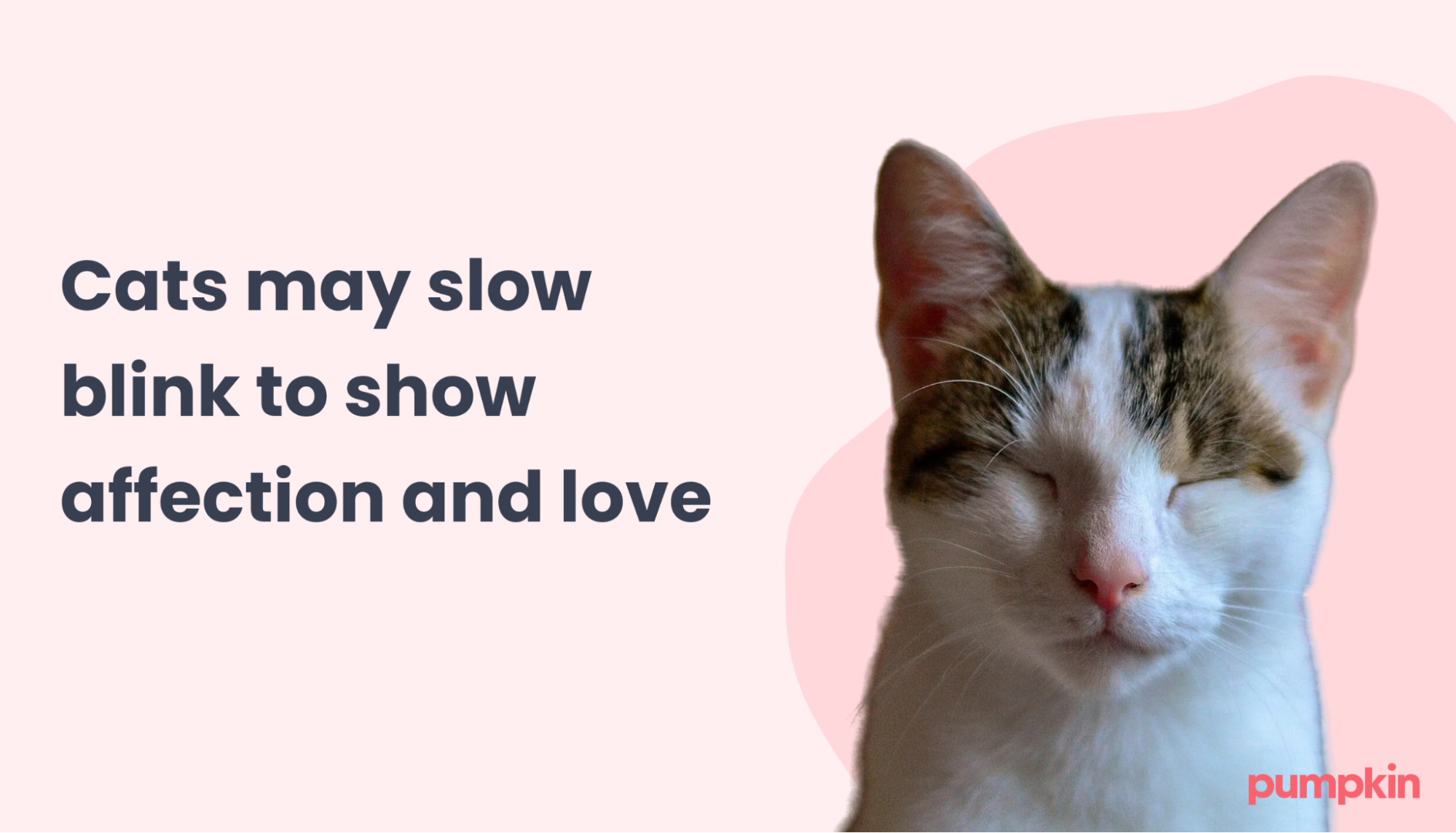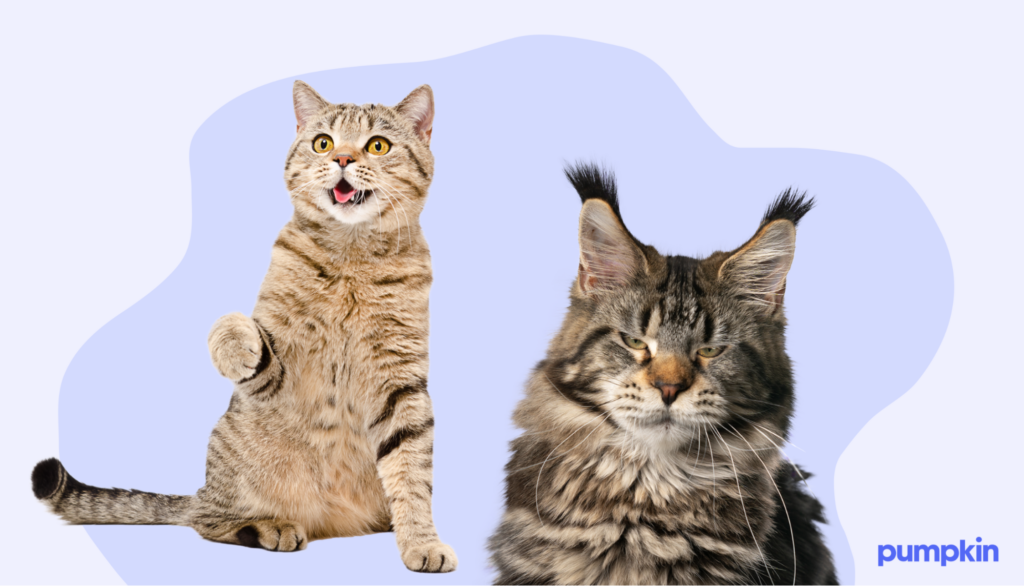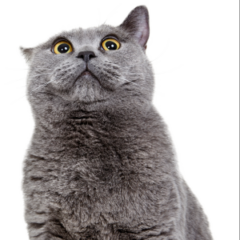- Lynn Guthrie
- Jan 7
- 5 min read
Key Points
Cats stare because they’re hungry, showing affection, hunting, curious, or displaying dominance over other cats.
Cats can see and hear much better than humans, so they may stare at things that we can’t detect.
If you notice tearing, discharge, watering, or redness in your cat’s eyes, take them to the vet.
Ever feel like someone’s watching you? If you have a cat, that may actually be the case. It can be a little jarring to turn around and see your kitty sitting perfectly upright, staring right at you unblinkingly.
But when you learn why cats stare, this strange cat behavior might seem a little less unsettling. In fact, a long gaze is often a sign that your kitty is showing you just how much they love you. To help you feel more comfortable with your cat’s ogling, learn why cats stare and how to decode their body language.
Why is my cat staring at me?
Staring is a common cat behavior, and this nonverbal communication could mean a couple of things:
Hunger: If your kitty is hungry, they may stare at you to try to get your attention for some food. If your cat is standing near the food bowl, meowing incessantly, or it’s almost mealtime, you may receive direct eye contact until you satisfy their request for food.
Showing affection: When your cat looks at you with squinted eyes and blinks slowly with a relaxed body, they’re showing you the kitty version of affection and love. A study about cats and blinking found that these slow blinks can indicate positive emotional communication between kitties and humans.

Hunting: Behind that purring lump on your bed is a fierce predator. In order for them to focus, they stare at their prey. You’ll notice that during a stare-down with a bird, for example, your cat may flinch with each little movement, an indication that they’re hyper-focused.
Curiosity: Cats are very curious and will stare at objects that interest them to get a feel for what’s going on. This could be you, a critter outside the window, or a fly buzzing through the air. Some people even believe that cats stare at ghosts and other spirits invisible to their owners.
Fear or aggression: An intense stare can be a sign of aggressive behavior in a cat. Their eyes can also set in a fixed state when they’re fearful. In this case, you’ll likely also notice other signs of fear, such as an arched back, a tense posture, and hair that’s standing up.
Confusion:Senior kitties may stare into space if they’re confused or disoriented. As cats get older, their cognitive functioning declines, which can affect their awareness and sight.
Staring down other cats: If you have multiple adult cats, you’ve more than likely caught them in staring contests with each other. Staring between cats can be a display of dominance (remember that cats are all about territory). It can also ignite friendly play, wrestling, or aggression over the best sleeping spot, food, or litter box accessibility. Visual contact is often the starting point for interactions between cats.
Why does my cat stare at me and purr?
Just like a slow blink, a cat stare accompanied by a purr is a positive sign. Purring and kneading while staring at you is another way cats and kittens show their love for us. Kittens will also purr, knead, and stare at their mom for attention.
These soothing noises generally mean your cat is comfortable and happy.
Understanding cat vision
Does it ever seem like your cat can go an abnormally long time without blinking? Well, it turns out your cat’s eyes have three eyelids, which makes their regular blinks less noticeable.
Cats’ third eyelids are called nictitating membranes, from the Latin word “nictare,” which means “to blink.” They can extend across the eyeball to provide moisture and an extra layer of protection. You can’t see this happening, so it may appear as if your cat is not blinking at all. However, the nictitating membrane allows your cat to focus on prey, or when they stare at you, to figure out what you’re doing.
But aside from their three eyelids, cats have other superhuman qualities that may cause them to stare. Their hearing range is about four times higher than ours, and they have one of the widest hearing ranges of all mammals. They also have a stronger sense of sight than humans do, as they can see better in the dark and even detect UV light.
So your kitty may stare at things that they see and hear, but that you can’t detect.
Understanding the body language of a cat
When deciphering your cat’s body language, pay attention to their eyes, ears, tail, and body posture.
Happy body language: A happy cat will display a relaxed posture. Their tail may move slowly from side to side, and their ears may be perked up. Your kitty may purr and blink slowly, knead their paws, or rub against you. Their pupils will be steady and not dilated. They’ll be open to your attention and may seek it by staring at you.

Agitated or scared body language: An angry cat will show an agitated posture and an intense stare. Their tail will swish back and forth rapidly, their pupils will dilate, and their ears will be turned to the side or pinned back. This is an angry or upset cat who may need some distraction or some space away from whatever is bothering them.
You can distract this kitty from fear by throwing a treat or cat toy in their direction. Avoid a direct approach when dealing with a scared cat.
When to be concerned
You know your cat best, so if you notice a sudden change in their habits, trust your instincts. A visit with your veterinarian may be in order. Your vet can help rule out any health problems that cause too many staring episodes.
If you notice tearing, watering, discharge, or redness in your cat’s eyes, you’ll want to take them to the vet. These are potential signs of conjunctivitis, and they can mean that your kitty’s eyes are inflamed.
Your vet may conduct a Schirmer test to see if your cat’s eyes are generating enough moisture. They may also perform an exam that involves dropping a fluorescein stain into your cat’s eyes, which can determine if their corneas are scratched.
Worried about the cost of unexpected vet bills? Cat insurance can help you afford the best care. With Pumpkin Cat Insurance plans, you get help paying for eligible vet care in the future, which means your cat and your wallet are protected.
FAQs
Why does my cat stare at me without blinking?
It can mean a variety of things when your cat stares at you without blinking. In general, cats blink much less than we do; they also have a third eyelid that keeps their eyes moisturized without visible blinking. Extended staring could mean your cat is hungry, curious, afraid, or confused (if they’re a senior kitty). To figure out what their stare means, look for contextual clues from their body language.
Why do cats just sit and stare at nothing?
It’s possible that your cat is actually staring at something. Cats see and hear much better than we do, so they may just be noticing something that our eyes and ears can’t detect. This is normal cat behavior and not a cause for concern.
Why should you not stare a cat in the eyes?
Cats can feel threatened when you make direct eye contact with them, especially if they don’t know you well. However, one study showed that a neutral facial expression without direct eye contact can cause kitties to relax. For cats in your household, you can also try slow blinking into their eyes if you want to give your cat a sign of affection, but you should avoid this if they seem scared or stressed.
REFERENCES
https://veterinarypartner.vin.com/default.aspx?pid=19239&id=8801625
https://veterinarypartner.vin.com/default.aspx?pid=19239&catId=102901&id=10867337
https://www.zoetispetcare.com/blog/article/cat-sounds-explained
https://www.merckvetmanual.com/cat-owners/eye-disorders-of-cats/eye-structure-and-function-in-cats
https://veterinarypartner.vin.com/default.aspx?pid=19239&id=9479407
https://vcahospitals.com/shop/articles/why-do-cats-stare-at-nothing

